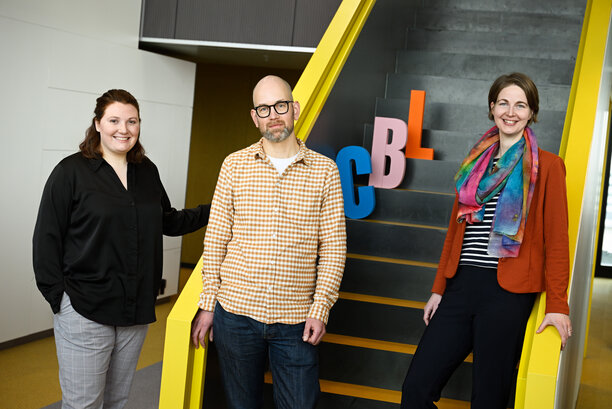Help for teachers in implementing Challenge-Based Learning
‘The Faces of Challenge-Based Learning’ series: TEACH helps and coaches teachers in CBL education.
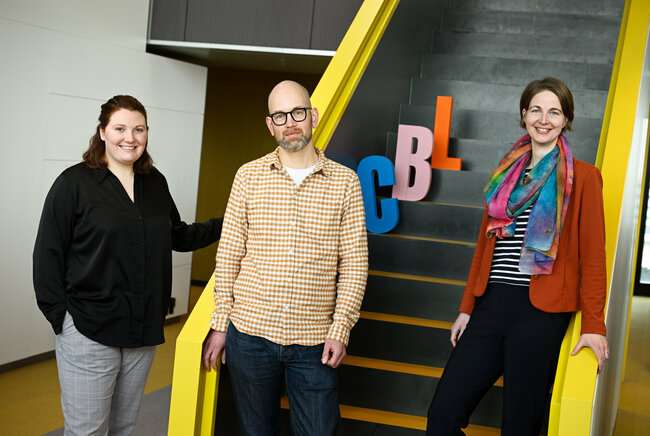
With the innovative educational concept of Challenge-Based Learning (CBL), we train future engineers at TU/e. As of this academic year, CBL plays a more significant role in the curricula of all of our bachelor’s programs. Through a series of stories, we will be giving a face to the form of education that sometimes takes students – and teachers – out of their comfort zone but prepares them for the challenges they will tackle as engineers. In this edition, the TEACH team members help teachers with CBL via coaching and workshops.
As a teacher at TU/e, you may wrestle with all kinds of questions when you start with Challenge-Based Learning (CBL) in your courses. Are you struggling, for instance, with the changing role of teachers within CBL? How do you manage the teaching assistants (TAs) who guide the groups of students? What do you do yourself, and what do you leave to the TAs?
TEACH offers help
Don’t panic. The members of the TEACH team, part of Human Resources Management, can help you. This takes place in different ways: by guiding group processes around teacher professionalization, by providing training, and by offering advice within the various departments. In doing so, the TEACH team members collaborate closely with the teacher supporters and program directors in the departments.
For CBL, the TEACH team provides coaching and workshops. This offering is linked to the CBL toolkit that has recently become available, serving as a first-aid kit for all practical CBL questions.
What is Challenge-Based Learning?
In this innovative educational concept, students work together to experience how their discipline can contribute to solving challenges from the world around us. They learn which knowledge and expertise are needed to do so and can immediately apply and deepen the knowledge acquired in practice by studying or doing research.
Together with students from other disciplines, as well as stakeholders from business, government, or science, students learn to think at a system level. They also learn various other competencies, such as collaboration, communication, planning, and organization.
Professionalizing teachers
Rik Slakhorst, Jolien Strous, and Paola van der Sluis from the TEACH team gladly share how they support teachers in further professionalizing themselves in CBL.
In the courses developed by the TEACH team, they guide teachers through Challenge-Based Learning. “CBL has such a great impact at TU/e, which is why we laid out these new offerings,” Slakhorst says.
CBL crash course
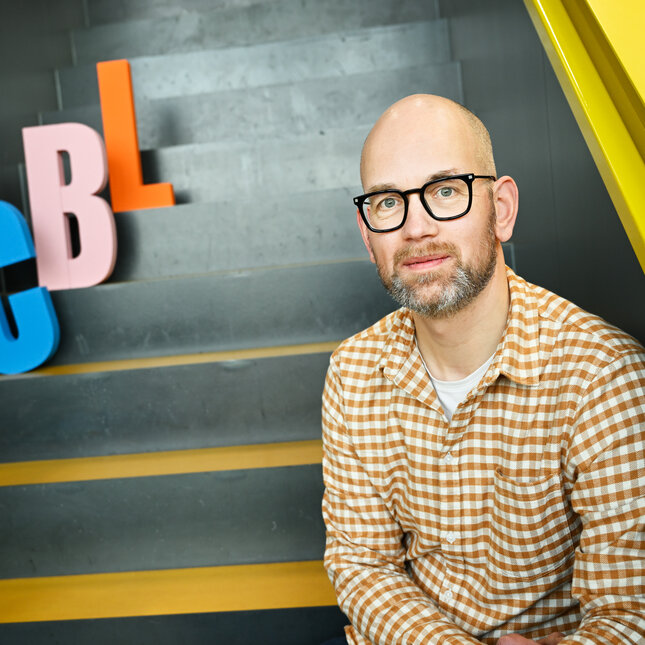
Slakhorst takes teachers through a kind of one-hour CBL crash course. This is useful for new teachers at our university and those who have heard of CBL but don’t know precisely what this form of education entails.
“As TU/e’s educational vision is in place (as of September 2023, ed.), we can also really answer the question of what CBL is and why we have chosen this as a form of education. At first, it was one of the many three-letter abbreviations, but it’s getting increasingly tangible,” says Slakhorst.
At first, CBL was one of the many three-letter abbreviations, but it’s becoming more tangible.
Rik Slakhorst, TEACH
Insightful starting point
“Over an hour, we offer new – and existing – teachers an insight into CBL. That’s the foundation with which they can move forward, such as the course that Jolien gives on coaching students or Paola's design course. There’s a sequence to it.”
Slakhorst emphasizes that the TEACH team is only part of the support. “We can explain to teachers what CBL is and inspire them in the courses and workshops. However, the ultimate design and shaping is done by teachers and the teacher supporter at the department or with support from innovation Space. Our colleagues from Teacher Support in the departments are the first line of help for teachers.”
Coaching students in CBL

As a teacher, how do you help students through the learning process of a CBL project? That’s the central question Strous wants teachers to practice within her course.
“As a teacher, you are primarily a coach in CBL education – of the students taking the course and of the tutors who supervise the groups of students. These are often senior students. Those tutors play an important role in CBL courses.”
We teach the tutors they have to try to sit on their hands. The student has to get to work.
Jolien Strous, TEACH
Feedback and motivation
The course also covers how to keep up the motivation among students when working on CBL assignments in groups. How do you give feedback? How do you get them thinking without giving them the answer or giving them too much direction?
Strous: “The course is practical. Teachers work on cases in which they practice how they can approach these kinds of situations within CBL education. How they should start the conversation. How they let students find their paths to solutions.”
Teaching tutors
Strous and her TEACH colleagues also provide training for tutors/teaching assistants. “Tutors facilitate the students, have an eye for group dynamics, and sometimes play a role in assessment. They watch how the groups become a team, how the tasks are distributed, and what they ultimately deliver.”
“Students often initially turn to their tutor for help. We teach the tutors that they have to try to sit on their hands. The student has to get to work.”
The CBL design process
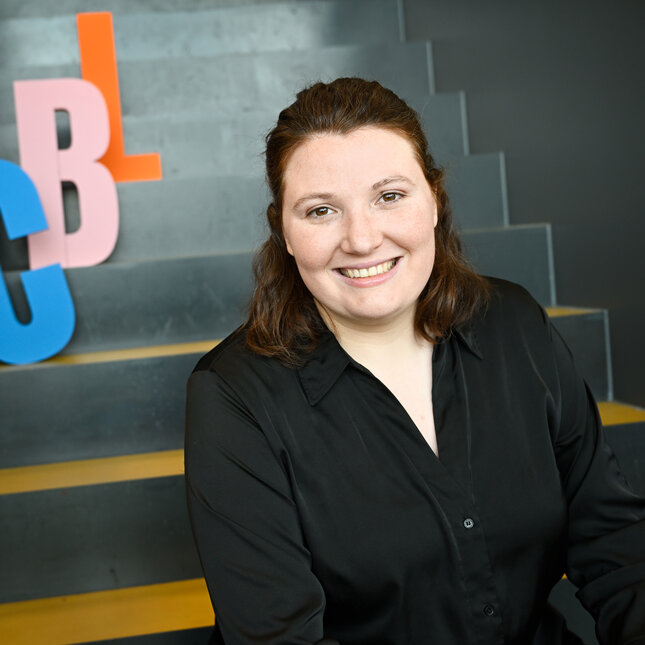
How do you design a CBL course? How do you handle the open-ended challenges that students work on in groups? In this workshop on the CBL design process, she and the participating teachers unravel the journey students and teachers go through during a CBL course.
From broad to focused to broad
“Within CBL education, students are given an assignment in which the correct outcome is unclear. This is open-ended and anything but absolute,” says Paola van der Sluis of TEACH. “People often think you must let the students go completely free, but that’s not entirely true. They go through different stages. Sometimes, they need the space to think broadly and creatively in all directions.”
“In the next phase, they must structure and focus on an idea. This alternation occurs continuously, and you must guide them through it in your course.”
Uncertainty for teachers
According to Van der Sluis, teachers also go through those phases of broadening and focusing when designing a CBL course. “They start broadly: what is CBL? What courses are there? What do I want to do? What do students want? In the orientation phase, you can fantasize and dream broadly.”
“Then it’s time to focus; you thoroughly analyze what you want to teach students within your course.” After that analysis phase in this workshop, teachers get to work with their teacher supporter.”
“They then start designing creatively, such as by brainstorming. That’s very important because if you don’t do that, you quickly end up designing a traditional course. You usually look at what you already know or do in a traditional course. It would be a shame if, when designing a CBL course, you were to miss out on the phase in which you open yourself up to new ideas.”
If students keep doing what they always do, they won’t develop new solutions. The same goes for teachers.
Paola van der Sluis, TEACH
Thinking outside traditional boxes
The course gives teachers an overview of what to expect when they start with CBL in their education.
“A new manner of working provides uncertainty, and CBL provides that either way. If you can show that there’s a structure you can follow, it gives confidence in the process. Through this, we’re putting teachers in the starting blocks for developing their own CBL courses.”
Optimal support
The TEACH team constantly thinks about what skills teachers need to professionalize themselves and adjusts the workshops as necessary. “We’re creating a learning line in our offerings to align them even better,” says Van der Sluis.
Part of the courses is for teachers to share experiences among themselves. Van der Sluis thinks that many teachers are often too reserved to ask for each other’s help. “I want to encourage them to do so, as you can learn so much from each other’s experiences and expertise.”
Written by:
More Faces of Challenge-Based Learning
More on our strategy

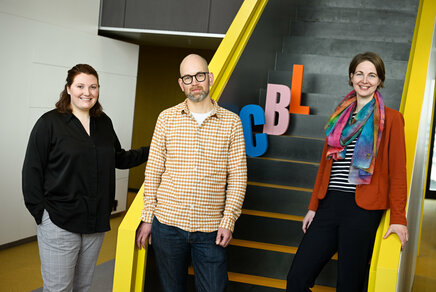

![[Translate to English:] Christa van der Toorn. Foto: Bart van Overbeeke](https://assets.w3.tue.nl/w/fileadmin/_processed_/4/6/csm_BvOF%20CBL%20Christa%20van%20der%20Toorn_crop_8a3284c1ad.jpg)
